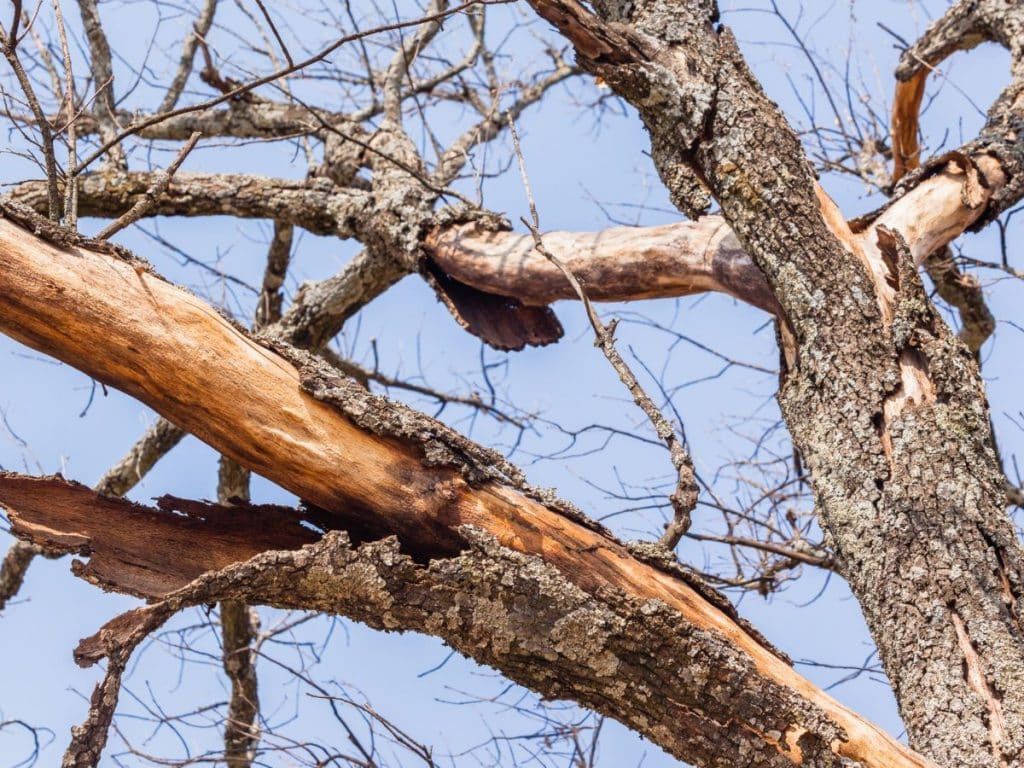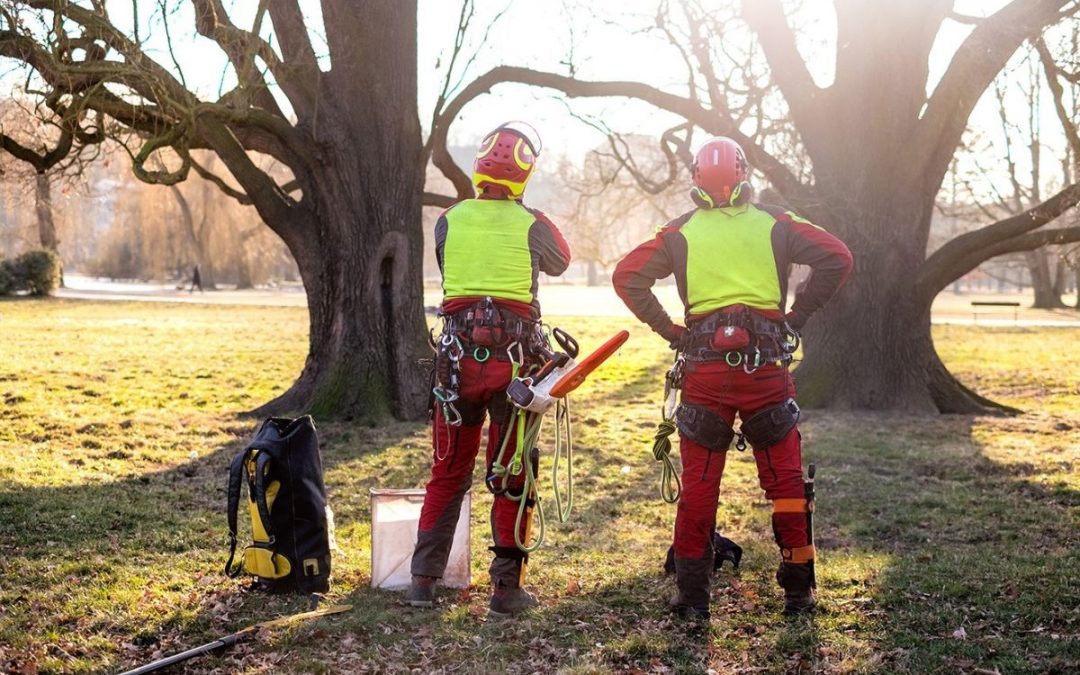If you are concerned about a tree on your property, you should call in an arborist. Depending on the type of tree, an arborist may be necessary to inspect the tree from multiple perspectives. They can examine dead or dying branches on the upper side of the branch, where it may be invisible to a person on the ground. If a tree has large branches that extend over a house, an arborist may be necessary to climb the tree to assess the branches’ condition. The arborist should follow guidelines to protect your home and property.
Table of Contents
What Causes A Tree To Fall Over?
A tree can fall over for several reasons, including poor planting conditions, advanced insect infestation, and malnutrition. It could also fall over due to construction damage or old age. In order to keep a tree from falling, you should be on the lookout for warning signs. Here are some of the most common causes of tree fall and how to spot them.
Heavy rain and high winds can cause trees to topple over. The soil in the root zone can become saturated and weakened, resulting in the tree losing its grounding. The sap in the trees can also be pushed up into the canopy by windy conditions. A tree in a heavy clay soil may also suffer from this problem.
A tree’s trunk can also collapse when there are too many dead branches or weak roots. Dead branches that are no longer alive must be removed immediately. A tree with missing bark (called “canker”) increases its risk of falling. If its roots are soaked with water, the trunk will be weaker and more likely to break.
How to Tell Which Way a Tree Will Fall
One of the best ways to predict which way a tree will fall is to find the direction of growth. However, this is not always easy. Some trees are very uneven in growth, which can make determining its fall direction more difficult. In this case, a simple trick will help you determine the direction of fall by measuring the distance between the top of the tree and its base.
Once you have determined which direction the tree is leaning, you can make a plan to release it. Start by making a third-of-the-way cut through the tree. The cut should be made on the side facing the direction you want the tree to fall.
Next, estimate the distance between the tree’s base and the nearest obstructions. Make sure the landing area is level and free of debris. Otherwise, the tree may roll or bounce around. It may also knock down other trees.
Visible Dead Branches That Fall With Minimal Agita
When it comes to a tree, there are several things that you should look for to determine whether or not it is at risk of falling. For instance, visible dead branches on one side or branches that are leaning are a red flag that the tree might fall. Also, if you see sprouts coming out of the base of the tree, this is a sign of severe stress and soil compaction. If you suspect a tree might fall, it’s a good idea to contact a professional arborist to perform a safety assessment.
Another red flag that a tree is at risk of falling is the presence of wood-eating insects. These creatures live in dead wood and are usually visible around the tree’s trunk. If the number of insects is high, this could indicate a serious problem. If this is the case, you should contact an arborist right away to ensure the safety of your home and family.

The Presence Of Deep Cracks Or Missing Bark On The
If you notice a crack in a tree, call an arborist to determine the best course of action. A tree with cracked bark is more susceptible to damage and may need to be removed. Deep cracks in a tree may be accompanied by low foliage growth. The presence of these defects may be a sign of drought stress.
Cracks in a tree’s trunk are often an indicator of decay and can be dangerous, depending on their location and size. A thorough aerial inspection may be necessary to detect large cavities. Deep cracks in a tree’s trunk may be an indicator of decay or infestation, or they could indicate girdling roots that will eventually cause the tree to fall.
Cracks in a tree’s bark may also be an indicator of decay or disease. In some cases, a tree may even weep sap in response to disease or a pest. This is because the internal pressure can force disease-causing pathogens out of the tree. Another sign of decay is deep cracks in the trunk that may be mistaken for frost cracks. A tree may be suffering from decay when it has missing bark or sunken areas of bark.
The Tree Has A Tight V-Shaped Branch Growth
One way to tell if a tree might fall is to look at its branch growth. If the branches have tight V-shaped growth, the tree is more susceptible to failure. This is because the branch bark ridges that develop in the “V” shaped union are weak and will easily be overgrown by the branch wood.
The Tree Should Have an Even Distribution Of Branches: A tree must have even branch growth throughout the crown. The trunk must have a good taper. It must also be free of diseases and insect infestation. In addition, a tree should not have wounds or conks. The trunk should be free of girdling roots, signs of boring insects, and excessive lichen covering more than one-quarter of the trunk. In addition, the trunk and branches must be healthy with green foliage and new buds developing throughout the trunk and branches.
Poor Architecture: Poor architecture indicates a structural imbalance in the tree. If the branch growth is twisted or irregular, it could be a sign of a tree’s impending collapse.
The Roots Of The Tree Are Weak and Rotten
If you notice that the roots of your tree are wet and weak, you may have root rot. This condition affects trees and many other types of plants. Fortunately, it can be treated early to save the tree. Root rot is caused by too much moisture and can be hard to diagnose, but if you notice symptoms, you can take action to help save your tree.
Rotting roots can be difficult to spot because they are beneath the surface of the soil. In some cases, however, you can see the mushroom-like growths of root rot fungi on the tree’s surface. If you notice this, you should get a tree expert to examine it and treat it before it dies.
The root rot fungus can cause tree death by attacking the roots. The fungi can lie dormant in the soil, but can become active when the soil becomes waterlogged. In some cases, the fungi can kill the tree before it falls, while others can make it fall over with the tree attached.
Conlusion
There are several signs that a tree may be a hazard. For instance, a tree may show signs of decay or change that could lead to a tree falling, potentially causing damage to nearby structures. As soon as you notice any of these changes, contact a certified arborist. You can ask your neighbors for a referral or search a directory in your area. Alternatively, you can contact the International Society of Arboriculture, which maintains a list of certified arborists.
A qualified arborist will be able to assess the condition of a tree, including whether it’s weak or potentially dangerous. A tree’s condition can be affected by water, wind, insects, or structural problems. It’s important to inspect the entire tree from the ground up. Some signs of weakness are obvious, while others are more subtle.

